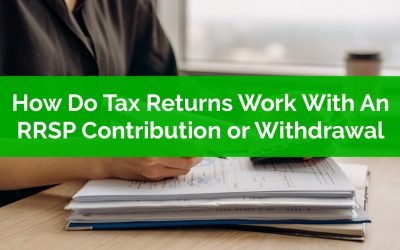Thank you for joining the waitlist!
You’re on the list for early access!
We will contact you via email when we’re ready for you to start your self-directed financial plan. In the mean time here is a quick preview…
Check out our latest blog posts…
What Is A Spousal RRSP? And Why Should You Use It?
Income splitting is often talked about in reference to high-income earners, but what about the average Canadian family? How does the average Canadian family split income and minimize tax? A spousal RRSP is one way for the average Canadian family to easily split income in retirement.
For high-income earners there are income splitting strategies like spousal loans or “income sprinkling”. Spousal loans are for families with lots of non-registered savings and a large difference in marginal tax rates between spouses. “Income sprinkling” can be used by families who own a corporation (although with the new TOSI rules has changed dramatically).
But what about your average Canadian household? Are there are income splitting options for them?
One very easy and accessible type of income splitting is a spousal RRSP. Unlike other income splitting strategies this one is very easy to set up, it doesn’t require a lawyer, and it’s easy to understand.
The big benefit of a spousal RRSP is that the average family can use it to “equalize” their registered assets before retirement. This allows for a more equal distribution of income in retirement and a lower overall tax bill for a household.
In addition to lower income tax it also opens up more opportunities to maximize government benefits in retirement.
But you might be wondering, isn’t it possible to split income after age 65 anyway, why would I need a spousal-RRSP?
While it’s true that after age 65 income splitting is much easier to do, it’s still a best practice to try to equalize registered assets before age 65. This allows for the maximum flexibility when creating a retirement drawdown strategy, especially when retiring early.
Equalizing registered assets can be extremely beneficial, especially before the age of 65 when there are fewer income splitting opportunities, for this reason we sometimes want to look at using a spousal RRSP to help split income in the future.
The Benefits Of Retirement Planning
Retirement planning is complex and includes many important considerations like retirement spending, income tax planning, income splitting, maximizing government benefits, deciding when to take CPP and OAS etc. etc.
All of these individual parts work together to create a great retirement plan. They are so important that even a small mistake can mean lower retirement spending or a higher chance of running out of money in the future. It could mean $10,000’s in extra tax or $10,000’s in reduced government benefits.
With a typical retirement plan spanning 30-40+ years it’s easy to understand how small change in assumptions can have a big effect on a retirement plan.
There are also many small decisions to consider when planning retirement, like when to convert RRSPs to RRIFs, when to start CPP, when to start OAS, how much to draw from investment assets, which investment assets to draw from first etc. etc.
In this post, we look at some of the important parts of retirement planning. What they are, what you should consider, and some additional resources to help.
How Do Tax Returns Work When There Is An RRSP Contribution or Withdrawal
The RRSP is a great financial planning tool. Investments grow tax-free within the account. Contributions to an RRSP reduce taxable income. And in some unique circumstances, it may even be advantageous to make contributions in one year and then deduct them in future years.
RRSP contributions and withdrawals will decrease and increase taxable income respectively. This effect can be seen on the tax return.
So, how do tax returns work when there is an RRSP contribution? What effect does an RRSP contribution have on the tax return?
And what about in the future? What happens when RRSP withdrawals are made? What effect does an RRSP withdrawal have on the tax return?
These are important questions. The benefit of strategic RRSP contributions and withdrawals can be $10,000’s or more.
Understanding how RRSP contributions and withdrawals affects your tax return is very important for Canadian retirement planning. We’ll go through the basics of how RRSPs work, as well as a few examples to show how an RRSP contribution or withdrawal shows up on the tax return.



